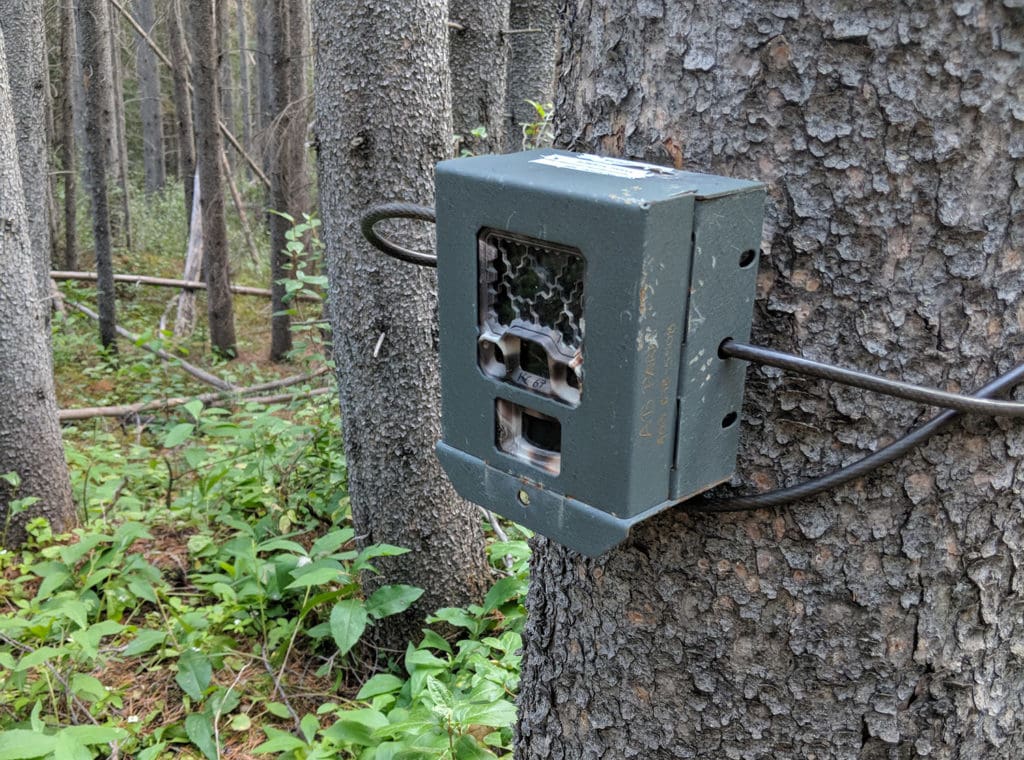Remote trail cameras, or camera traps, provide perspective on wildlife movement and shared space in the Yellowstone to Yukon region
Ever been in the forest and felt like something was watching you? It probably was! Wildlife surrounds us, listening and watching — even if you don’t see it.
Trail cameras, game cameras, camera traps, and remote wildlife cameras are an important part of seeing what seems invisible. These motion-activated cameras are used widely in research to find out more about wildlife and the spaces people share with them. They are a safe and non-intrusive way to monitor and track the movements of animals of all sizes.
This information helps Y2Y and partners make important decisions such as where wildlife are trying to cross roads, or how to reduce harmful human-wildlife interactions.
One example is wolverines. Because these loners travel such large distances, it can be hard to spot them.
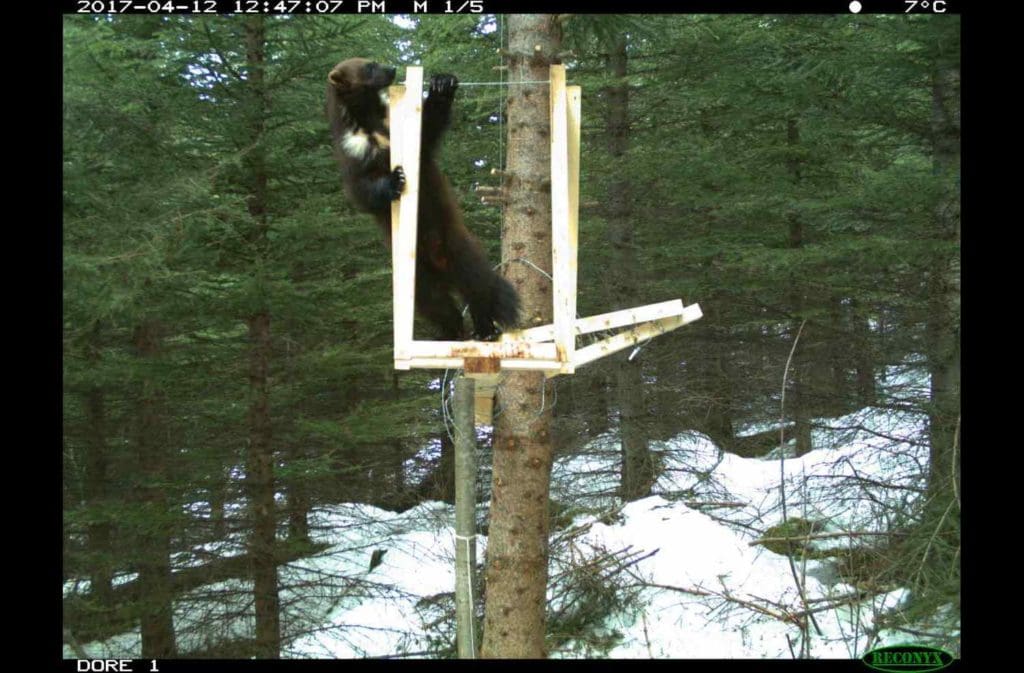
Knowing where they live is a part of helping them, so we’ve teamed up with researchers at Wolverine Watch as well as University of Calgary on two projects that use camera traps. This knowledge will help better understand where wolverines are and how we can support their habitat needs better.
Thanks to our supporters, we’re learning how to best live and recreate near wildlife.
Here are a few more of our favorite captures from some of our partners’ wildlife cameras in the Yellowstone to Yukon region:
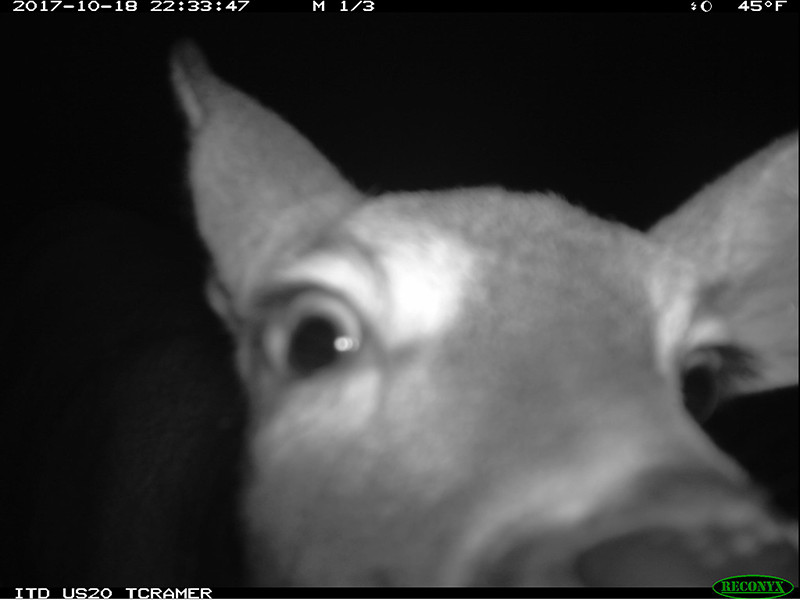
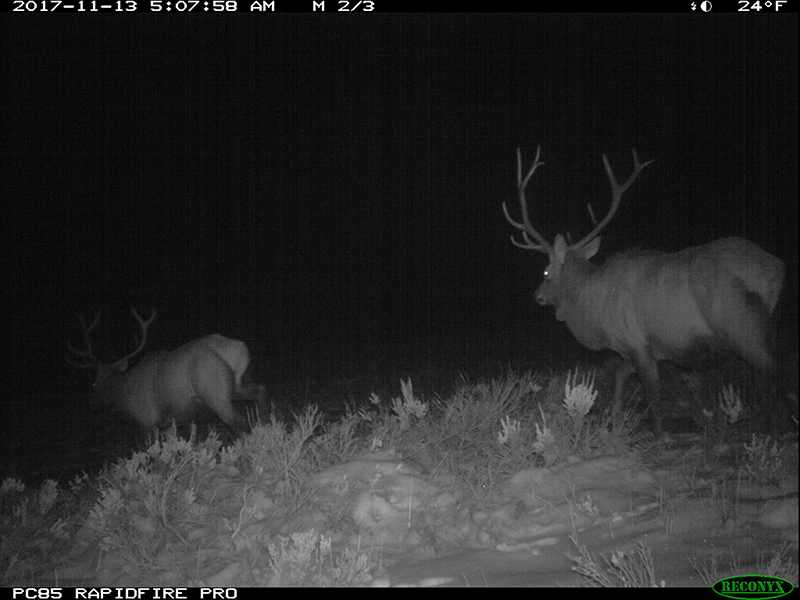
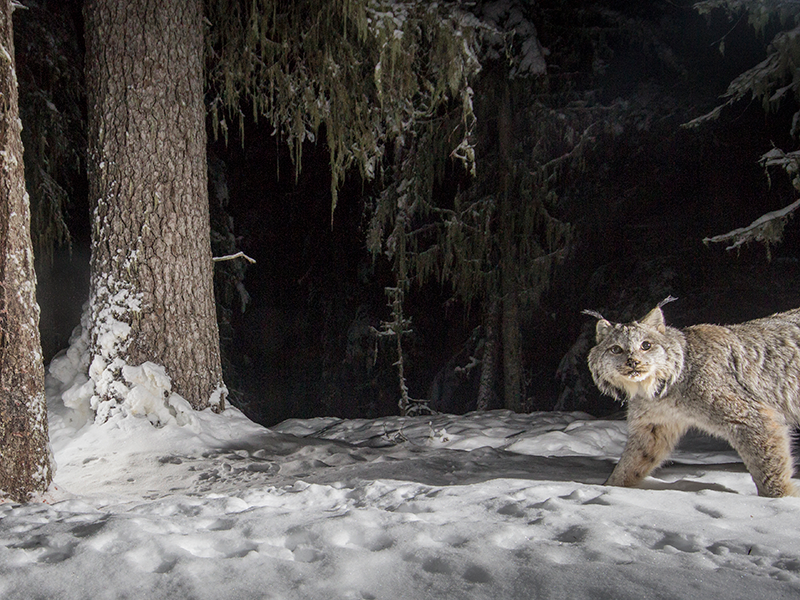
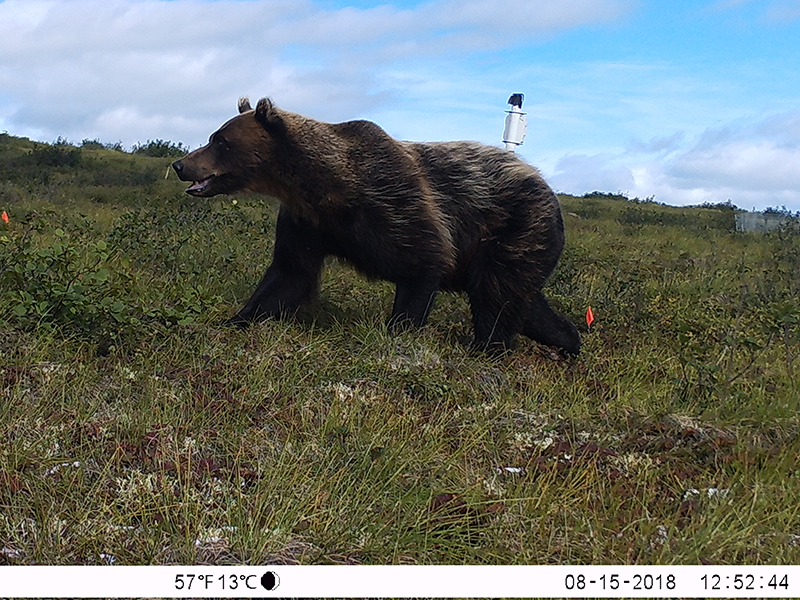
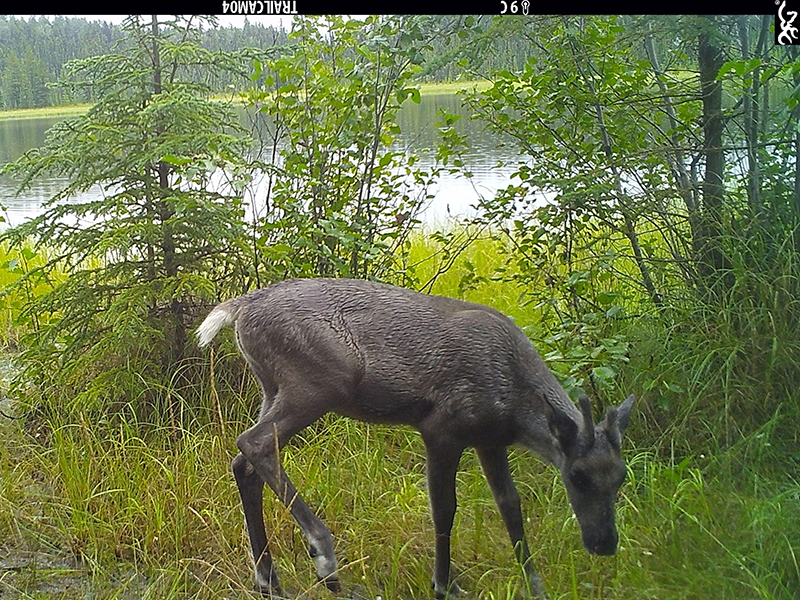
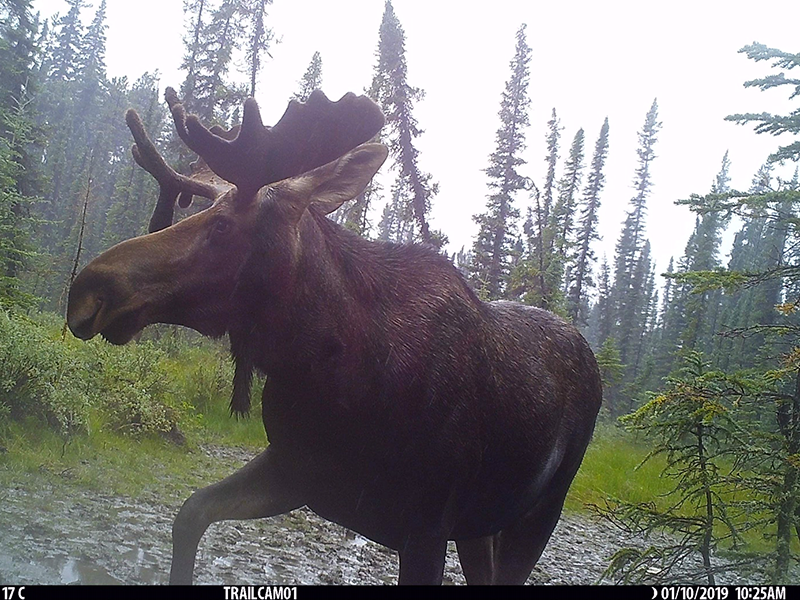
Bottom (left to right): A grizzly bear passes by a camera set up to record caribou herd movement in northern Yukon Territory (Kirsten Reid); A young caribou and bull moose are captured on camera where UNBC students studied wildlife use of mineral licks in the Muskwa Kechika Management Area (Pam Wright)
